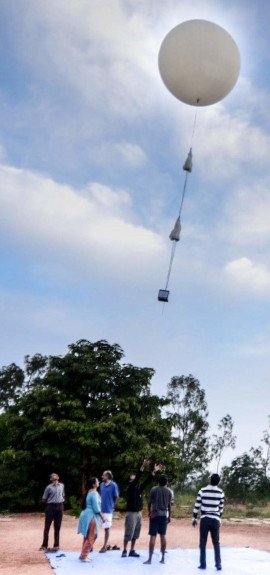
High Altitude Balloon Program
The High altitude ballooning (HAB) program was initiated in 2012. It involves launching small latex balloons (2-3 kg load capacity) to stratosphere with scientific instruments as payloads.
Usually, the balloons reach the stratospheric altitudes of ~30 km before they burst and a parachute is deployed to bring down the payload safely.
The balloons are launched from the CREST campus of IIA. HAB experiments were being used primarily as a testing platform for space payloads and instruments. However, over the years, this initial plan has grown to accommodate its own science interests as well.
The HAB platform is also popular with the innovative undergraduate and school students in and around Bangalore. These student projects range from studying the variation of atmospheric pollution with altitude to verifying the curvature of earth.
More Information
Launch Video: HAB Launch on 2013-09-29
Overview of the HAB program: Current Science, v104 No.6, March 2013
HAB: How To
Balloons in India are governed by the Ministry of Civil Aviation. General information regarding flight operations has to be communicated to the Airports Authority of India (AAI), at least one month in advance for getting their clearance. Permission for launch has to be obtained from nearby airports and air force stations for the intended launch window, so that AAI can release a NOTAM.
Guidelines
- Make sure to follow all regulations especially .
- Safety first! Remember that the payload drops from a great height. There is little control over the descent trajectory. It can land anywhere
- Parachutes should be sized appropriately for the payload weight.
- Sharp edges are dangerous.
- Plan for recovery if the payload is important. The only reliable method is through radio tracking but multiple means of tracking (on-board GPS, GSM based geo-locator, etc.) are preferable.